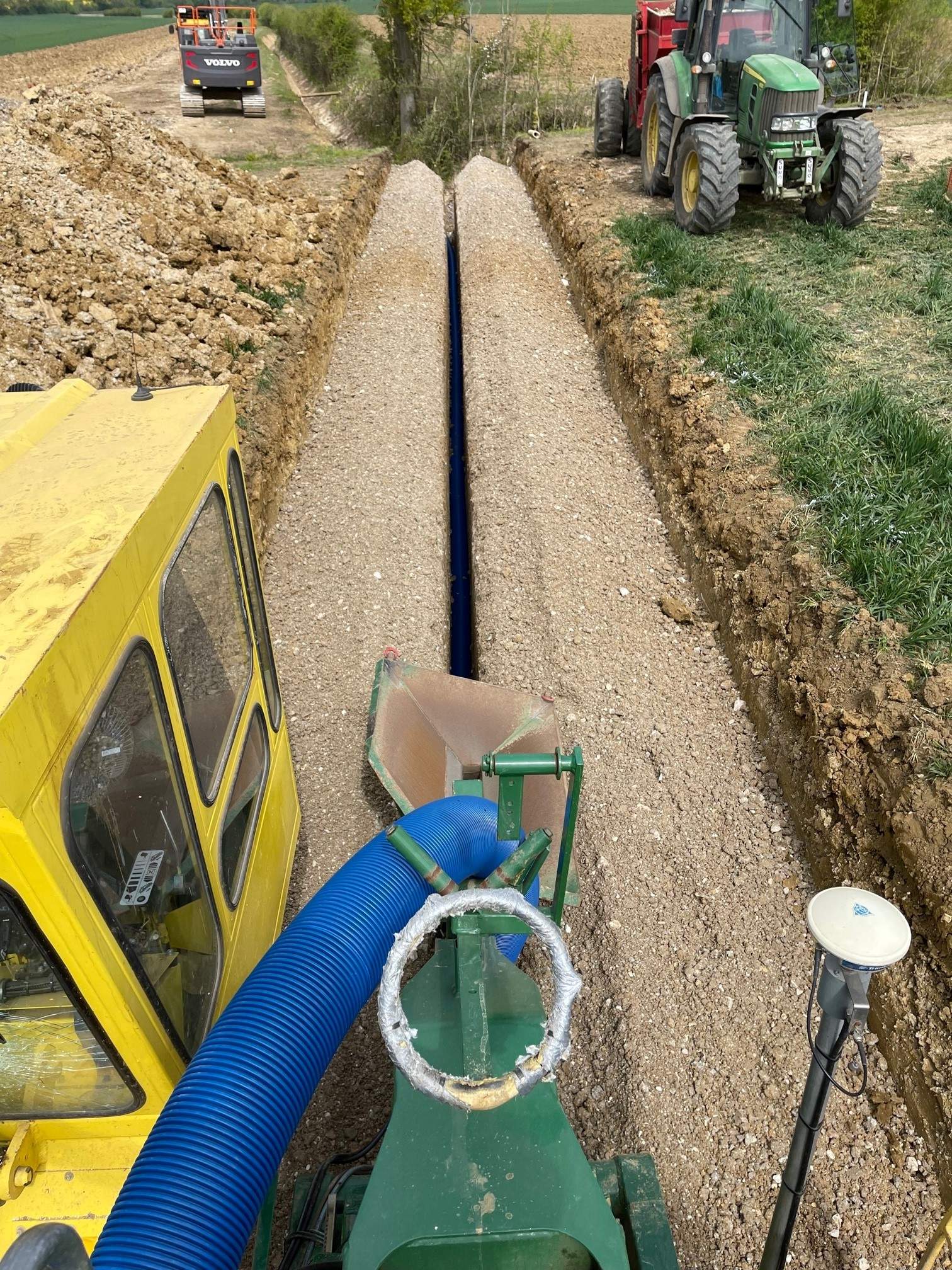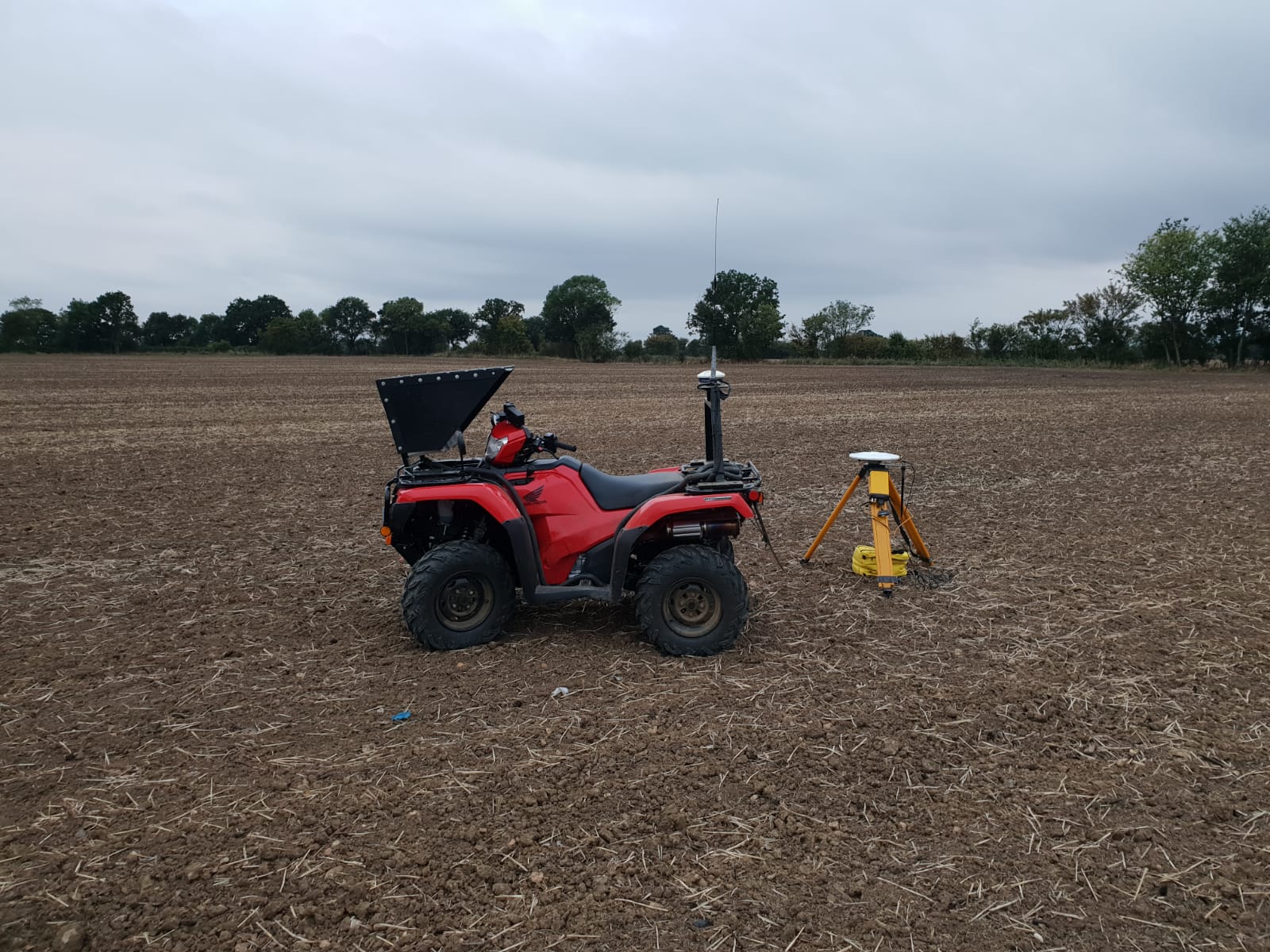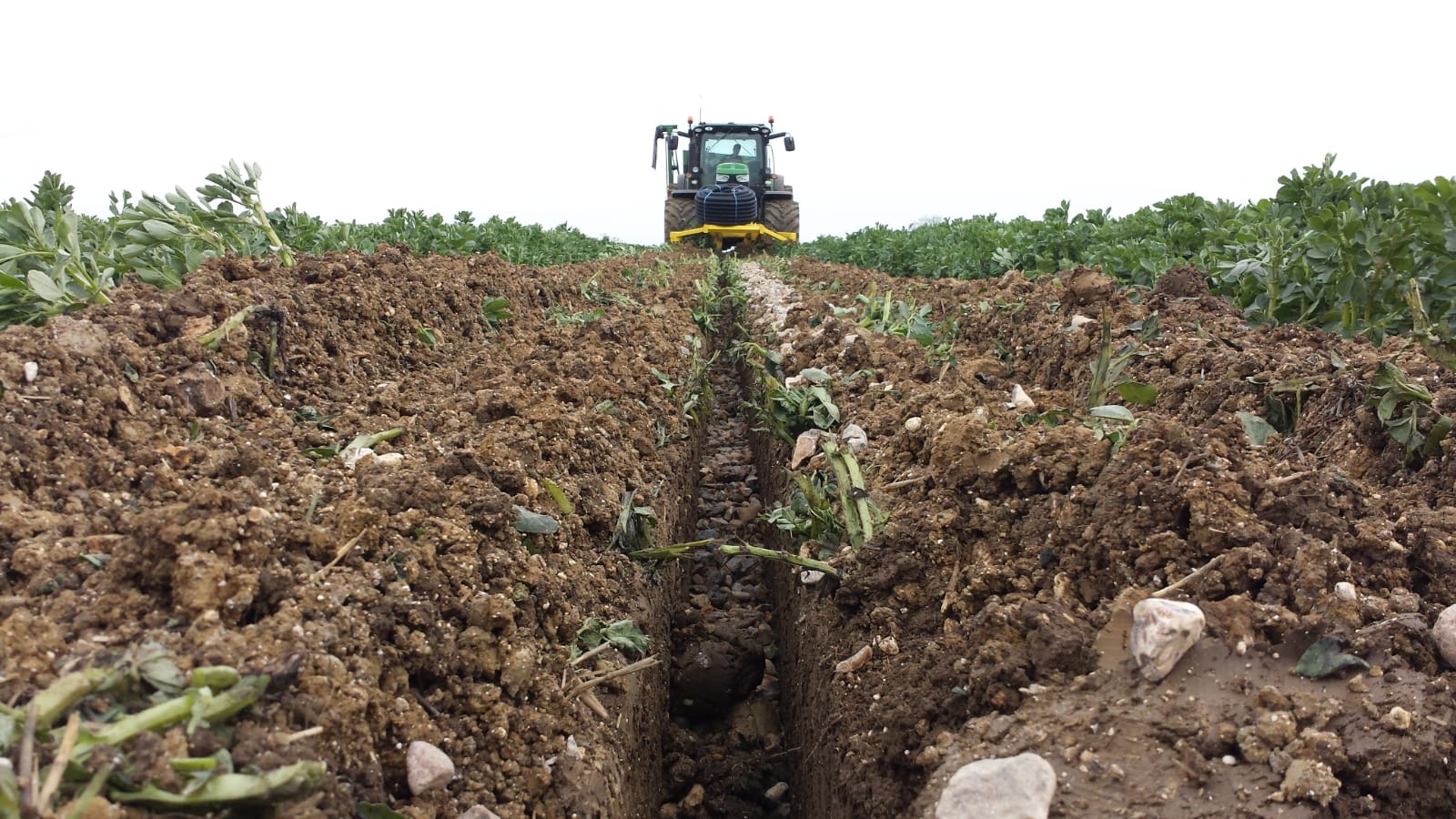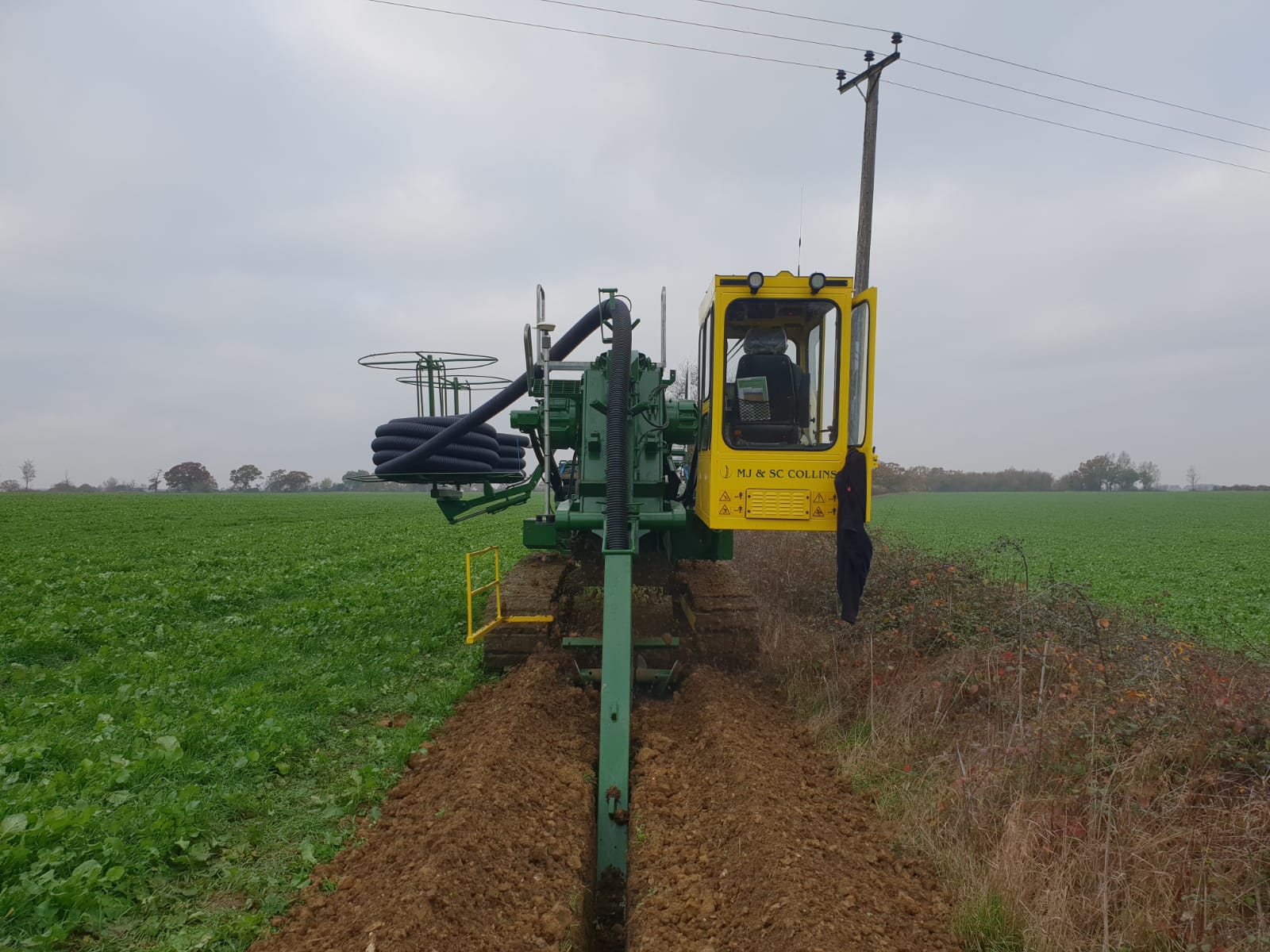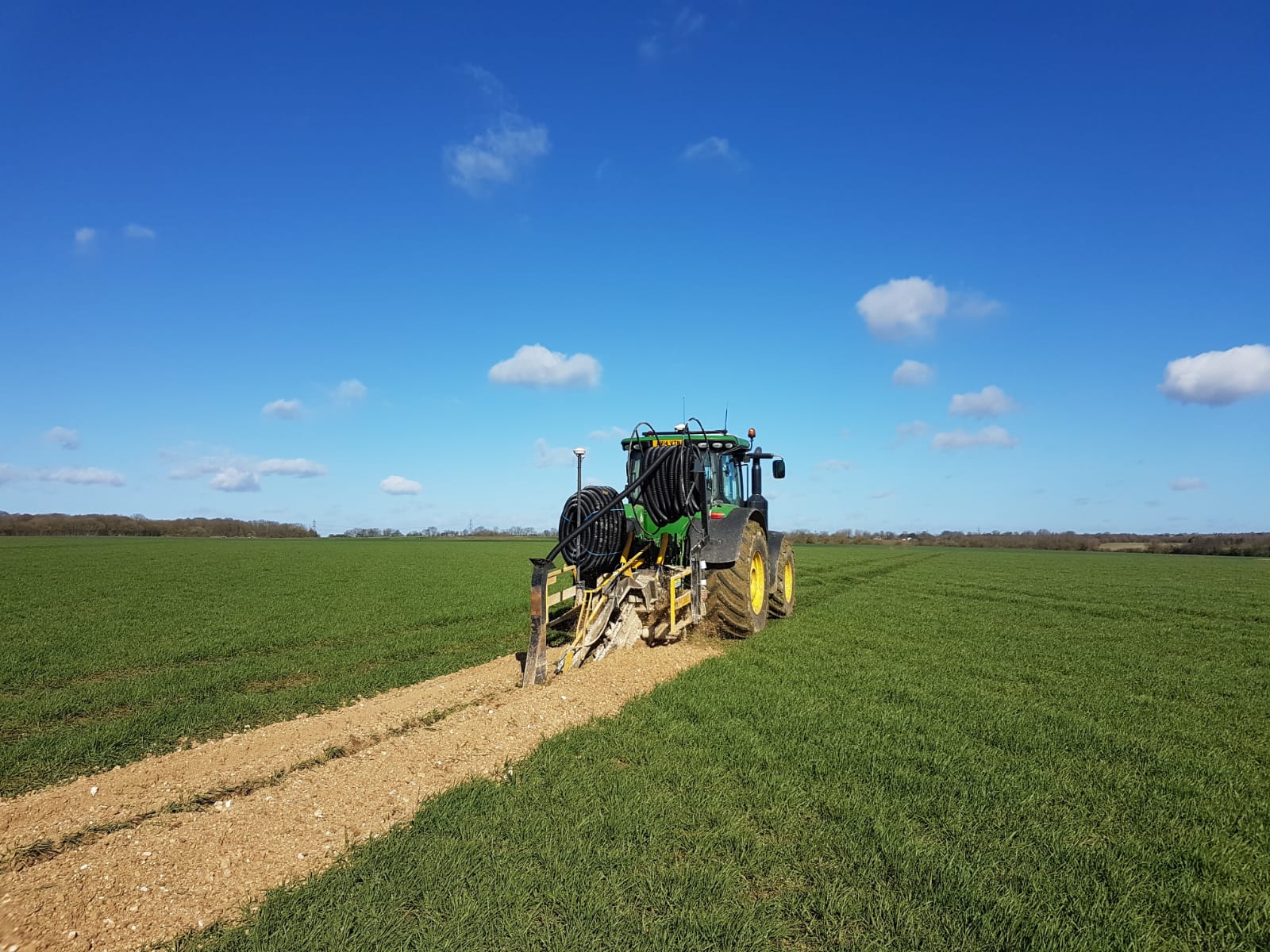Land Drainage
As some of our land at Lysander Park played host to a WW2 airfield, it was never drained in the 1980s and 1990s due to the remaining and redundant underground services that served the runways and buildings. We began to realise the waterlogging of the undrained fields was hindering the performance of our otherwise fertile soils. We were unable to travel on the fields in the early spring due to water logging, and black grass populations were slowly building despite best efforts to control the weed. Due to the area that was undrained it would have been hugely uneconomic to employ contractors to drain the land in a very short a period of time to ensure a quick response and return on the investment. We carried out extensive research with a view to carrying out our own in-house land drainage and as we already employed a lot of technology on the farm, gearing up for land drainage was fairly straight forward and economic for us.
After carrying out 150ha with the AFT 100 over 4
years we came to realise that we weren’t getting through the work load as fast
as we had imagined and we also began to pick up local contracting work.
Our spring work load on the farm with the new crops of sugar beet and soya
beans meant that farm work was taking up more time that we would have previously
used for draining. Having seen the transformation of the fields that we had
drained made us realise that investment of drainage was easily justified and that
more fields with older schemes installed in the 1970s would benefit from being
re-drained. We have a very good working relationship with Mastenbroek,
so we were offered a 2001 self-propelled Mastenbroek 30/20 that had had come
available due to a trade in from another company. The machine was
overhauled by Mastenbroek, repainted and delivered to us in November 2018, where it
was put straight to work. The addition of the Mastenbroek 30/20 has
trebled our output which is enabling us to carry out more land drainage in the
windows available to us whilst still being able to maintain the critical
attention to detail on our farming activities. The upgrade in machinery took us from an average of 800 - 1,000 metres per day to an average of 2,250 - 3,000 metres per day depending on the scheme.
We first invested in a tractor mounted AFT 100 trencher, which
would be used by our fertiliser spreading tractor during the spring in between
rounds of fertiliser. As users of Trimble GPS and RTK technology we
already had the capability to use Trimble’s Water Management software so we
only had to unlock our Trimble FMX displays to view additional GLONASS
satellites and install the software suite in the office. This technology
meant that we could survey our fields to be drained and then design, create and
install our own schemes which gave us the power to create plans using our
knowledge of the land and install schemes suit our mole draining machinery etc.
Land drains were installed with the AFT 100 and gravel was put into the
trenches using a 14T gravel cart which we had specially made to suit our needs.
Since carrying out the land drainage we have noticed a significant increase in the productivity of our land, it was impressing to immediately see this after installing the drains. Cereal yields have increased by 0.9T/Ha, efficiency of inputs has increased, worm numbers are now increasing and we are able to travel on the fields very early in the spring which is enabelling us to apply early doses of nitrogen which is in turn leading to increased yields. Soil structure has improved and we are able to reduce the intensity of the cultivations we carry out which is further adding cost savings and sustaining healthy soil. We have seen our land drainage operation as a way to tackle margin compression and as ever, add a very effective way of tackling the yield plateau much of the industry is facing.
Should you wish to recieve more information on our land drainage or discuss a bespoke scheme as a contracting project, please contact us and we would be very happy to provide more details.








